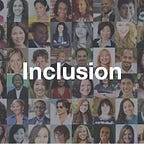Building Inclusive Tech Hubs Requires Intentionality
By Jared Karol
“In order to build inclusive tech hubs we have to focus on the community building aspects,” says Catherine Bracy, Co-Founder and Executive Director of the Tech Equity Collaborative in Oakland. “The reason that tech hubs are vibrant is because of the people who are in them.”
Catherine was speaking as part of a panel discussion at last year’s Tech Inclusion Conference in San Francisco. Joining her on the panel were Ramcess Jean-Louis, Director of Workforce Diversity and Inclusion at Comcast NBCUniversal; and Nicole Froker, Partner Engagement Manager at Google for Entrepreneurs. The panel was moderated by Melinda Epler, Founder and CEO of Change Catalyst. Throughout the discussion the theme of intentionality came up over and over again — the idea of mindfully developing tech hubs to ensure that everyone is included, that multiple points of views are represented, and that the hubs are sustainable for local as well as global economies.
A case in point at Google for Entrepreneurs: “We are directly backing organizations that are focused on underrepresented founders,” says Nicole. They are working with an organization in New York called Coalition for Queens, a nine month accelerator that provides coding skills to untapped talent looking to enter tech, providing resources to help them scale their work. Nicole also spoke of the Campus for Moms and Dads program, a nine-week baby friendly startup school for new parents who are on maternity or paternity leave. “We really think consciously and deliberately about everything,” says Nicole, “to make sure it’s inclusive and people want to work from there every day.” The campus includes crying and feeding rooms and other amenities that allow new parents to focus simultaneously on their babies and launching their companies.
“The reasons why tech hubs are important is that you don’t want to leave a certain demographic behind,” says Ramcess. And Comcast NBCUniversal is doing its part to bridge the educational, health, and digital divide by investing in STEM and coding programs like Internet Essentials, which makes the Internet available for low income homes. “As long as we have kids who have to work out their schedules with their parents and guardians so that they can drive to the internet and work on their homework, that’s a challenge.”
With the Tech Equity Collaborative, Catherine is organizing the Oakland tech community around a set of community-oriented values. “We think that the growing tech economy in Oakland should work for everyone,” says Catherine. “The tech community has a role in making sure that as the wave comes everyone has a surfboard.” This is an urgent problem in Oakland because of the challenges of displacement and gentrification. Catherine believes that “if we can solve [this problem] in Oakland, working with local governments, then this model could be replicated around the world. How do we build inclusive tech economies that support everyone in cities? Not just some who are already privileged.”
Local pride in making your city as inclusive as possible seems natural, but why do big companies like Google and Comcast NBCUniversal care so much about contributing to the building of inclusive tech hubs? What’s the motivation for them?
“Google started in a garage 18 years ago,” Nicole reminds us. “Entrepreneurship is really core to who we are. And if you’re looking to build a global company but you’re in an insulated environment, you’re limited to feedback from that limited worldview environment. You’re not going to be successful building a global company.” Inclusion is good for innovation, Nicole says, because when people feel that they’re in a safe environment, they are more productive and build better products, which ultimately contributes to the bottom line.
Ramcess agrees. “Comcast is very entrepreneurial in spirit. The organization started when Ralph Roberts bought a little cable company in Tupelo, MS, and he grew it to what it is today.” He goes on to say that “an inclusive workforce is important because it is reflective of the communities we serve. We’ll have employees that are more engaged and innovative, and willing to go the extra mile and extra time to ensure that the customer is happy.” An example of this, Ramcess says, is the talking remote control, a product that allows different languages to be spoken into one remote — a perfect solution for multi-lingual households.
It is uplifting to know that local organizations like Tech Equity Collaborative exist, and to hear about programs like Campuses and Internet Essentials that are so intentional in their focus, along with product innovation like the talking remote control. Will they become the inspiration for a new norm about how we build inclusive tech hubs? Melinda has hope: “Change is hard of course. But there are some really easy things that we can do if we just take a step back and analyze why and understand what are those barriers and address them.”
It all comes back to intentionality, doesn’t it?
See more videos from Change Catalyst and Tech Inclusion here.
About Change Catalyst:
Change Catalyst empowers diverse, inclusive and sustainable tech innovation — through events, consulting, research and training.
Our Tech Inclusion programs explore and develop innovative solutions to tech diversity and inclusion.
Our Startup Ecosystem programs help underrepresented entrepreneurs and investors to start, scale and fund worldchanging businesses.
Change Catalyst is a Certified B Corp, winning the “Best for the World” award for community impact in 2014 and “Best in the World” overall in 2015.
The Change Catalyst Team
Follow Us on Twitter | Like Us on Facebook | Subscribe to Our Email Newsletter| Listen to our Podcast
